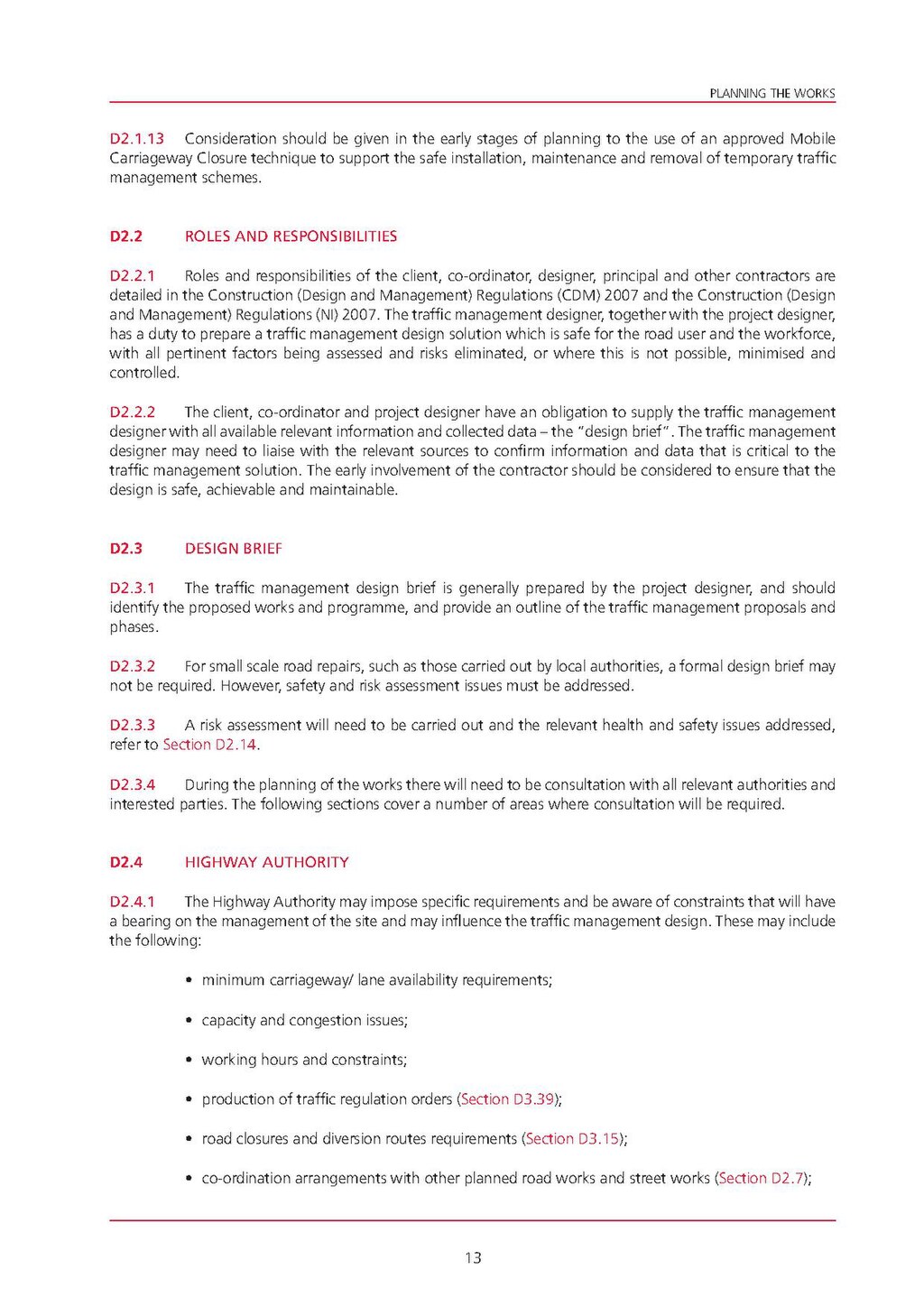D2.1.13 Consideration should be given in the early stages of planning to the use of an approved Mobile Carriageway Closure technique to support the safe installation, maintenance and removal of temporary traffic management schemes.
D2.2ROLES AND RESPONSIBILITIES
D2.2.1 Roles and responsibilities of the client, co-ordinator, designer, principal and other contractors are detailed in the Construction (Design and Management) Regulations (CDM) 2007 and the Construction (Design and Management) Regulations (NI) 2007. The traffic management designer, together with the project designer, has a duty to prepare a traffic management design solution which is safe for the road user and the workforce, with all pertinent factors being assessed and risks eliminated, or where this is not possible, minimised and controlled.
D2.2.2 The client, co-ordinator and project designer have an obligation to supply the traffic management designer with all available relevant information and collected data – the "design brief". The traffic management designer may need to liaise with the relevant sources to confirm information and data that is critical to the traffic management solution. The early involvement of the contractor should be considered to ensure that the design is safe, achievable and maintainable.
D2.3DESIGN BRIEF
D2.3.1 The traffic management design brief is generally prepared by the project designer, and should identify the proposed works and programme, and provide an outline of the traffic management proposals and phases.
D2.3.2 For small scale road repairs, such as those carried out by local authorities, a formal design brief may not be required. However, safety and risk assessment issues must be addressed.
D2.3.3 A risk assessment will need to be carried out and the relevant health and safety issues addressed, refer to Section D2.14.
D2.3.4 During the planning of the works there will need to be consultation with all relevant authorities and interested parties. The following sections cover a number of areas where consultation will be required.
D2.4HIGHWAY AUTHORITY
D2.4.1 The Highway Authority may impose specific requirements and be aware of constraints that will have a bearing on the management of the site and may influence the traffic management design. These may include the following:
- minimum carriageway/lane availability requirements;
- capacity and congestion issues;
- working hours and constraints;
- production of traffic regulation orders (Section D3.39);
- road closures and diversion routes requirements (Section D3.15);
- co-ordination arrangements with other planned road works and street works (Section D2.7);
13
